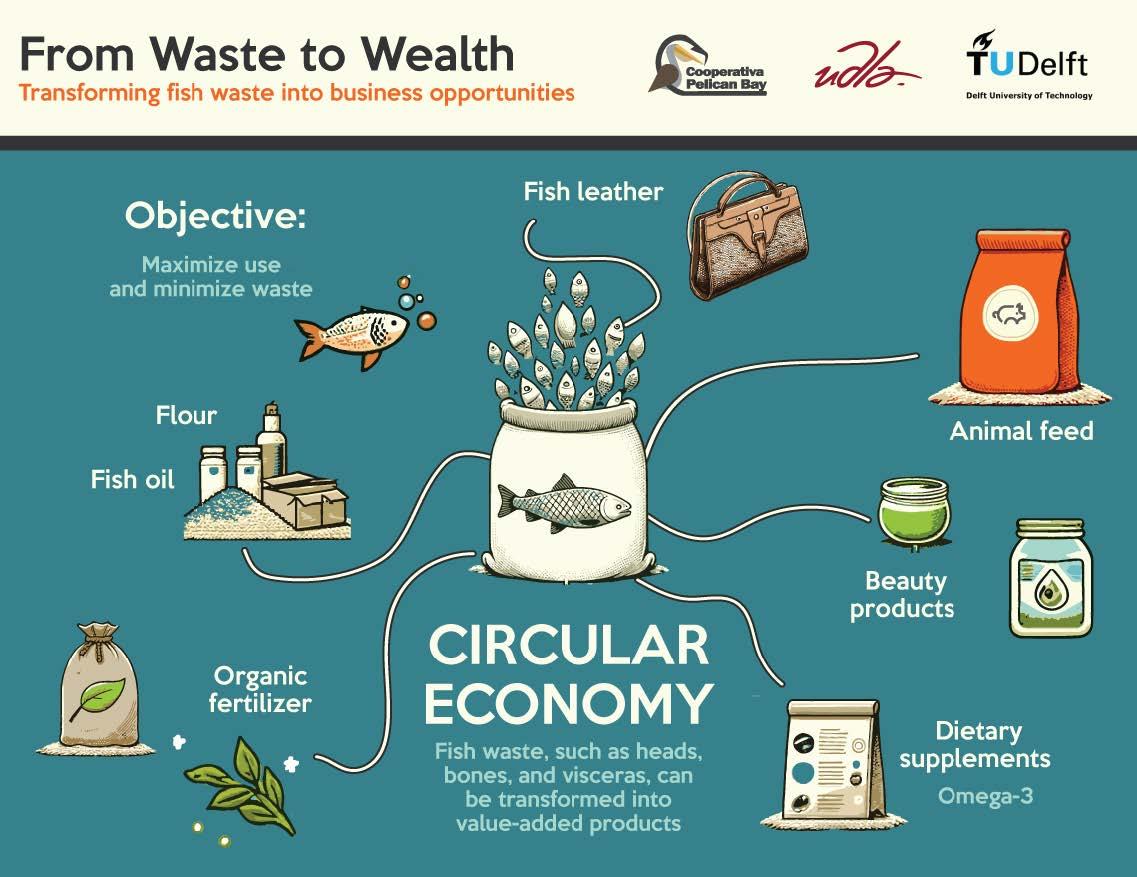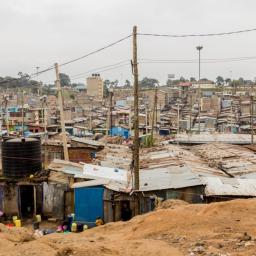How can fish waste be reused for other purposes? This question about circular use was central to the project carried out by scientists from the three LDE universities on the Galapagos Islands. They collaborated with local organisations on regenerative interventions. Bachelor's and Master's students from TU Delft and Leiden University also helped out.
Local fishermen, entrepreneurs, municipal authorities and chefs contributed ideas for circular and regenerative interventions to convert fish waste into value-added products, reduce environmental damage and strengthen economic opportunities for coastal communities on the island of Santa Cruz in the archipelago. The results are summarised in the report below.
The Galápagos Islands, a UNESCO World Heritage Site, face multiple socio-ecological pressures related to their rapid population growth, tourism-driven development, and overfished coastal fisheries (Escobar-Camacho et al., 2021).

Recognising that traditional single-purpose management approaches have not solved these challenges (Jones, 2013; Burbano & Mulrennan, 2020), the research team carried out this project to integrate circular economy (CE) concepts with local fishing activities. Small-scale fisheries (SSF) are an integral part of food security, livelihoods and cultural identity for the inhabitants of the Galápagos.
However, a major problem in Santa Cruz is the 2.25 tonnes of fish waste that is discarded every week – more than 117 tonnes per year (Moreno et al., 2020). This unmanaged fish waste poses ecological risks, from the proliferation of invasive species to water and soil contamination, while also representing a missed economic opportunity.
By introducing circular economy solutions, they hope to generate revenue streams from fish by-products and strengthen a more sustainable fishing system. Converting this waste into new products could further reduce the environmental impact of improper disposal (e.g. spread of invasive species, foul odours, harmful gases) while strengthening local incomes (Castrejón & Defeo, 2025).

The methodology used in this study is the Circular Value Flower (CVF), a structured approach for analysing and redesigning resource flows that encourages stakeholders to join forces. This project applied the CVF methodology to promote the community of Santa Cruz in identifying circular interventions based on closing resource cycles, with the aim of creating multiple values.
The project will run from 2023 to 2025 and aims to embed the principles of the circular economy (CE) in the fishing system of the island of Santa Cruz, Galápagos. This initiative brings together the Universidad de Las Américas (UDLA) in Ecuador, the Delft Centre of Entrepreneurship (DCE) at Delft University of Technology (TU Delft), the Circular Community Foundation (CCF), the Institute for Housing and Urban Development Studies (IHS) at Erasmus University Rotterdam, the Institute of Biology at Leiden University, and the Pelican Bay Fishing Cooperative of the Galápagos Islands.

Leiden-Delft-Erasmus (LDE) Universities support initiatives that promote co-creation of research between LDE institutions and scientists from Africa, South and Southeast Asia, and Latin America. The LDE Global Fund supports initiatives to encourage inclusive research partnerships and innovative community activities.
More information about this project is available from the researchers involved at LDE universities:
- Institute of Biology at Leiden University Dr. Martijn Bezemer t.m.bezemer@biology.leidenuniv.nl
- Delft Centre of Entrepreneurship (DCE) at Delft University of Technology (TU Delft) Dr. Fátima Delgado Medina F.DelgadoMedina@tudelft.nl
- Institute for Housing and Urban Development Studies (IHS) at Erasmus University Rotterdam Dr. Laura Quadros quadrosaniche@ihs.nl



